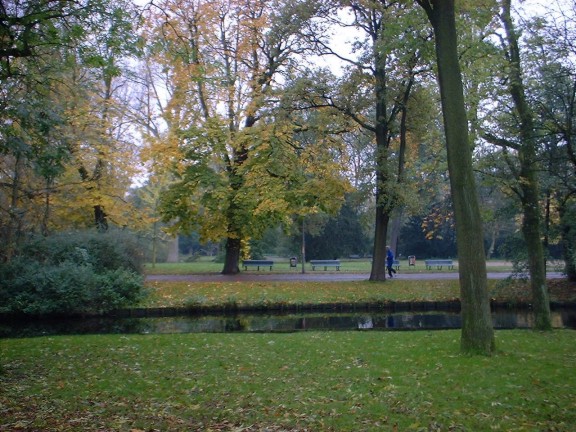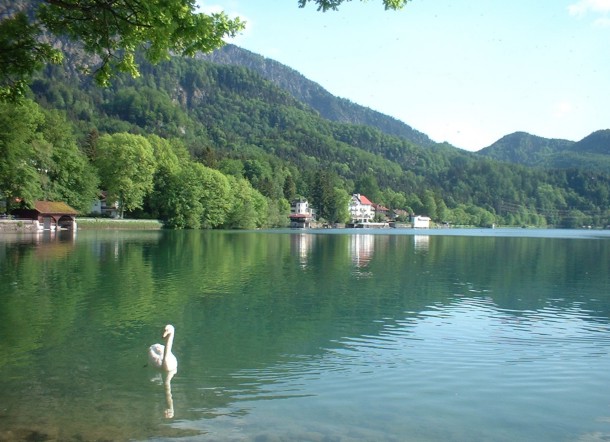3 The increasing evidence base for health benefits of outdoor recreation and access to nature
As identified in the section on the drivers of future outdoor recreation, health and well-being is an increasing area of research. The body of literature in Europe supporting positive links between active and passive use of natural environments and human health is increasing but still relatively fragmented (Morris, 2003). Evidence suggests that forests and other nature areas help in people’s recovery from stress and attentional fatigue. Outdoor recreation is well on the way to becoming an important element of a healthy living and a remedy against the deficiencies of a modern life separated from nature. People with special needs such as the elderly or those with physical or mental disability often gain therapeutic benefits from activities conducted in natural environments. Mental well-being is supported also through the role that play takes in helping to establish personal and community identity for children and young people.By offering an attractive environment for recreational activities, forests may seduce people with a sedentary life style to become more active during their leisure time. Activities such as recreational walking and cycling already have a positive effect on health. It has been shown that more green space within the living environment leads to people visiting natural environments more often (e.g. Grahn and Stigsdotter, 2003*; Tyrväinen et al., 2005). However, a higher number of visits to green areas does not automatically mean that these people are more physically active. For example, people living in a less green environment may still walk often, but do so more frequently in a built-up area as opposed to a green space.
Urban forests and parks near to where people live are especially important for elderly and young people who are restricted in their capacity to travel. The most active users of neighbourhood forests are probably children. There are also programmes that try to stimulate people to become physically active within the local natural environment, for example in the United Kingdom (Ashcroft, 2002; O’Brien, 2005). When they do go for a walk, a lack of nearby nature-based opportunities tends to increase the number of people using a car and subsequently leads to driving longer distances to visit an attractive natural area (de Vries, 2000). The key factor for active use is easy access to the areas, preferably within walking distance from home. In a survey study in Salo, Finland half of the respondents noted that the main reason for not using urban recreation areas was the distance to get there (Tyrväinen, 2001).
The most sought after experiences are mainly enjoying the natural scenery, peace and quiet. These qualities are sought, if possible, near home, but increasingly they can be found only in rural and peripheral urban areas. Finnish nature tourists, for example, look for quiet and peaceful surroundings as well as the possibility to move independently in a natural environment. In addition, hiking trails and constructed facilities for the outdoors were emphasized, while guided activities and excursions were seen as less important. The Finns seem to retain a relatively close association with nature and to retain the skills needed to manage independently in natural places. However, the urbanization process also taking place in Finland may increase the demand of guided activities in the future (Tyrväinen et al., 2003*).
Tourists mainly evaluate the environment in terms of landscape, where attractive scenery becomes one of the most important reasons for the choice of destination (Tyrväinen et al., 2001). In Finland, almost 80% of people live in cities or population centres, but almost half of Finns (48%) are interested in taking a nature trip within a year and 26% within the next few year. Most people (28%) were interested in taking a trip to a national park, hiking, fishing or hunting area owned by the state. Private cottages were also a relatively popular travel destination (16%). Tourists were willing to travel an average of 380 km from their home municipality to a nature area. Today, the majority of national parks are located in Lapland, some 800–1000 kilometres from the capital, Helsinki Metropolitan area. Therefore, the demand for shorter travel distance puts more pressure for developing nature tourism services in commercial forests located in South-Finland, mainly in private ownership (Tyrväinen et al., 2003*).
If open to the public, recreational use of forests tends to be rather intensive in highly populated countries such as the Netherlands. Forests, however, have a relatively large “social capacity” per hectare, because of the screening effect of trees there can be many people present without the area feeling crowded. The perception of crowdedness obviously also depends on visitor expectations. However, people’s recreational motives vary and different user interests often lead to conflicts (see below). For example, those who want to go for a walk in a quiet and natural environment may feel disturbed by others, who pursue hobbies such as horseback riding and mountain biking (e.g. Seeland et al. (2002). In the future, motorized use of natural areas is likely to be in increasing conflict with activities linked with experiencing peace and quietness and solitude.
Psychological well-being does not necessarily have to be derived through physical activity. An important positive health effect of viewing and experiencing nature is its stress reducing effect. Research aiming to replicate original studies in the United States (Ulrich et al., 1991*) has led to similar results in Sweden (see e.g. Hartig et al., 1996). Just visually experiencing a natural setting can be shown to reduce stress. Stress relief, as measured through muscle tension, blood pressure and electrical brain activity, can be demonstrated within some minutes of exposure to a green environment (Ulrich et al., 1991). Moreover, viewing or visiting natural environments (compared to built urban environments without natural elements) after stressful or mentally fatiguing situations, produces greater physiological changes toward relaxation and faster recovery of attention-demanding cognitive performances (Parsons et al., 1998).
There are only a few epidemiological studies on the relationship between nature and health. A study in Sweden by Grahn and Stigsdotter (2003) demonstrated that the more often one visits green areas the less often one reports sickness from stress. An epidemiological study performed in the Netherlands by (Maas et al., 2006) showed that residents of neighbourhoods with abundant green space tend, on average, to enjoy better general health. This positive link was found to be most apparent among the elderly, housewives, and people from lower socioeconomic groups. Moreover, a recent study in Finland (Tyrväinen et al., 2006) conducted in two largest cities showed that perceived stress symptoms and self-reported health was influenced by the total amount of time spent in natural areas. Similar results have been found in the U.K. (Bell et al., 2005). The results suggest that exposure to nature areas increases positive emotions while negative emotions decrease only when exposure to natural areas is relatively high. Weekly contact with nature within work or study was found to increase positive emotions and decrease negative emotions.
It is unclear to what extent the mechanism behind this restorative effect is evolutionary in character and/or cognitively mediated. Studies related to restorative environments show that people use favourite places often located in natural environments to regulate their self-experience and feelings. Moreover, these places are usually aesthetically appreciated and provide an opportunity for self-expression. Restorative outcomes, i.e. relaxation, decrease in negative feelings, forgetting worries, and recovering attention focus have characterised visits to natural favourite places (e.g. Hartig et al., 1991; Korpela and Hartig, 1996).
A high aesthetic quality may not be required for a stress reducing effect, but might be helpful to attract people to the recreation area. One precondition, however, is quite generally thought to be important for restorative effects: safety. The (assumed) presence of potentially dangerous other people will diminish positive health effects. As mentioned before, common motives for visiting forests and natural environments are experiencing solitude, peace and quietness. These qualities may also be conducive to the stress-reducing effect. However, crime statistics, for example in the United Kingdom, show that physical attacks are rare in woods, and that such concerns are often based on perceptions rather than reality (Burgess, 1995). One of the key factors for security is visibility, which requires active management of the understorey, and giving the impression that the area is controlled (Tyrväinen et al., 2003; Thompson et al., 2004).
Another possible mechanism relating nature to health is that of social interaction and cohesion. While European research in this topic is still scarce, several studies conducted in Chicago suggest that green space, especially trees, may help to facilitate (positive) social interaction with neighbourhood members (see e.g. Kweon et al., 1998). This is suggested to reduce feelings of social isolation, which is a risk factor related to depression. Although it is still unclear what are the most relevant mechanisms behind the health effects, recent Dutch research has shown that the relationship between the amount of green space in the living environment and self-reported health is positive, even after controlling for relevant socio-demographic and socio-economic characteristics (de Vries et al., 2003).
Moreover forests contribute to a better quality of living environment in the cities, for example by improving air quality and consequently the health of urban residents. The leaves of trees can take up many pollutants, e.g. ozone, nitric acid vapour, nitrogen dioxide, ammonia, sulphur dioxide and particles (aerosols and dust). Some of these pollutants can cause serious health problems. Trees also provide valuable shading from the sun. An individual tree can provide Sun Protection Factor (SPF) of 6 to 10, which means a level of exposure to ultraviolet radiation of one sixth to one-tenth of full sun (NUFU, 1999).







